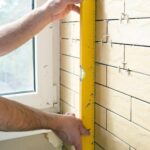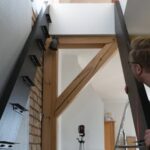Water pressure is a vital aspect of every household’s plumbing system. Adequate water pressure ensures the smooth functioning of various tasks, such as taking showers, washing dishes, and doing laundry. However, if you’ve been experiencing weak water flow or struggling with low water pressure in your home, it can be frustrating and inconvenient.
Understanding the importance of adequate water pressure is crucial before looking for ways to improve it. In this article, we will explore the signs of low water pressure and help you identify common indicators in your plumbing system. We will also discuss how to diagnose the problem and ensure that the issue does not lie with the municipal water supply.
We will delve into examining faulty pipes and fittings, addressing water pressure regulators, and handling sediment buildup that may be obstructing your water flow. Additionally, we will explore options for upgrading pipe size and layout to enhance water pressure through pipe replacement or redesign. We will also discuss the benefits of seeking professional assistance in boosting water pressure if needed.
By following preventive measures to maintain high water pressure, you can enjoy improved water flow consistently in the long run. So let’s dive into understanding how you can improve the water pressure in your home and experience its benefits in your everyday life.
Signs of low water pressure
Low water pressure can be a frustrating problem to deal with in your home. It can affect various aspects of your daily life, from taking a shower to doing everyday chores. In order to address the issue effectively, it is important to first identify the signs of low water pressure and understand the common indicators in your plumbing system.
One of the most obvious signs of low water pressure is a weak flow of water from your faucets or showerheads. If you notice that the water coming out is not as forceful as it used to be, it could indicate a drop in water pressure.
Another indicator is when it takes longer for appliances like washing machines or dishwashers to fill up with water. Additionally, if you see that your sprinkler system is not working efficiently or that your toilet tank takes a long time to refill after flushing, these may also point towards low water pressure.
To further diagnose the problem, check if multiple fixtures in different parts of your home are experiencing low water pressure. This will help determine whether the issue is localized or if it affects the whole plumbing system. By examining these common indicators, you will have a better understanding of whether you are experiencing low water pressure and can proceed with finding a solution.
| Signs of Low Water Pressure |
|---|
| Weak flow from faucets and showerheads |
| Longer filling time for appliances |
| Inefficient sprinkler system |
| Toilet tank slow to refill after flushing |
Diagnosing the problem
When faced with low water pressure in your home, it is important to identify the underlying cause in order to effectively improve it. Here are some steps you can take to diagnose the problem and determine its source:
- Check for leaks: One common cause of low water pressure is a leak in your plumbing system. Inspect all visible pipes and fixtures for any signs of leaking water. Look for dripping faucets, damp spots on walls or ceilings, and pooling water near appliances or fixtures. If you find a leak, it’s important to promptly repair or replace the affected components.
- Evaluate pipe material and condition: The material and condition of your pipes can have a significant impact on water pressure. Older homes may have galvanized steel pipes which are more prone to clogging and corrosion over time, reducing water flow. Inspect visible pipes for signs of rust, corrosion, or mineral buildup. If you notice any issues, consider contacting a professional plumber to assess and replace the problematic pipes.
- Test individual fixtures: Low water pressure may be localized to specific fixtures in your home rather than affecting the entire plumbing system. To determine if this is the case, check the pressure at multiple faucets, showers, and appliances throughout your home. Make note of which areas have lower pressure compared to others as this can help narrow down the cause further.
By following these steps, you can begin identifying and addressing the cause of low water pressure in your home. Whether it’s a leaky pipe or an issue with certain fixtures, understanding where the problem lies will enable you to take appropriate measures to improve water pressure throughout your house.
Checking the main water supply
When dealing with low water pressure in your home, it is important to first rule out any issues with the municipal water supply. This step is crucial because if the problem lies with the main water supply, it will require professional assistance to resolve. Here are some steps you can take to check the main water supply:
- Contact your local water supplier: If you notice a sudden drop in water pressure throughout your home, it may be useful to contact your local water supplier to inquire about any maintenance work or known issues in your area. They can provide information on whether there have been any disruptions or repairs that could be affecting your water pressure.
- Check for neighborhood-wide low pressure: Talk to your neighbors and find out if they are experiencing similar problems with their water pressure. If multiple households in your area are facing low water pressure, it is likely that the issue lies with the municipal supply and not something specific to your home’s plumbing system.
- Test different faucets and fixtures: Turn on various faucets and fixtures throughout your home to determine if there is a consistent decrease in water pressure. If only certain areas of your house are affected while others maintain normal pressure, then it is more likely that there is an issue within your home’s plumbing system rather than with the main supply line.
By taking these steps to check the main water supply, you can determine whether or not professional assistance is required. If it turns out that the problem lies with the municipal supply, contacting a professional plumber or reaching out to your local authority responsible for maintaining the main supply can help resolve the issue effectively.
Examining faulty pipes and fittings
One of the common causes of low water pressure in a home is faulty pipes and fittings. Over time, pipes can become damaged or clogged, leading to restricted water flow and decreased pressure. It is important to examine the condition of your pipes and fittings in order to identify any issues that may be contributing to low water pressure.
To begin examining your pipes and fittings, start by visually inspecting them for any visible signs of damage such as leaks or corrosion. Look for areas where pipes are worn out or joints have become loose. These are indications that repairs or replacements may be necessary.
In addition to visual inspection, it may also be helpful to use a pressure gauge to test the water pressure at various points in your plumbing system. This will help you determine if the problem is isolated to certain areas or if it affects the entire system.
Once you have identified any damaged or clogged pipes, it is important to take prompt action to repair them. In some cases, a simple fix such as tightening a loose fitting may be sufficient. However, more extensive repairs such as replacing a section of pipe may be necessary if the damage is severe.
When repairing or replacing pipes, it is important to use proper tools and techniques to ensure a secure and leak-free connection. If you are not confident in your abilities to perform these repairs yourself, it may be worth seeking help from a professional plumber who has the experience and expertise needed for this type of work.
| Signs of Faulty Pipes | Signs of Clogged Pipes |
|---|---|
| Visible leaks or corrosion | Slow draining sinks or showers |
| Worn out or loose joints | Gurgling noises from drains |
| Low water pressure in certain areas | Foul odors coming from drains |
Addressing water pressure regulators
Water pressure regulators are an essential component of any plumbing system, as they help maintain a steady and controlled water flow throughout your home. However, over time these regulators may become faulty or wear out, leading to low water pressure. In this section, we will explore how to address water pressure regulators by adjusting or replacing them for optimal water flow.
Identifying the issue
The first step in addressing water pressure regulators is identifying whether they are the cause of low water pressure in your home. Signs of a malfunctioning regulator include inconsistent water pressure, sudden drops or surges in pressure, and unusual noises coming from the regulator. If you notice any of these signs, it’s important to take action to ensure optimal water flow.
Adjusting the regulator
In some cases, low water pressure can be resolved by simply adjusting the regulator. Locate the regulator on your main water supply line and check if there is a screw or bolt that can be turned clockwise or counterclockwise. Gradually adjust it while monitoring the water flow in different parts of your home until you achieve the desired pressure. It’s important to note that not all regulators can be adjusted; some may require replacement instead.
Replacing the regulator
If adjusting the regulator doesn’t solve the low water pressure issue, it may be necessary to replace it. Before replacing the regulator, make sure to turn off the main water supply to avoid any potential accidents. Remove the old regulator by unscrewing it from the main supply line and install a new one following manufacturer instructions. Once installed, turn on the main water supply and test your faucets and showers for improved water flow.
By addressing faulty water pressure regulators through adjustments or replacements, you can ensure optimal water flow throughout your home. However, if you’re unsure about how to handle this task yourself or if you have tried these steps without success, it may be best to seek professional assistance to guarantee a correct and safe resolution.
Handling sediment buildup
Sediment buildup can often be a leading cause of low water pressure in homes. Over time, mineral deposits and sediment can accumulate inside pipes, restricting the flow of water. This can lead to reduced water pressure and even clogs in the plumbing system. Fortunately, there are several methods that homeowners can use to remove sediment buildup and restore optimal water flow.
Flush out the system
One effective method to handle sediment buildup is by flushing out the plumbing system. Start by turning off the main water supply to your home. Next, open all the faucets in your home, starting from the highest level and working your way down. Leave them open until no more water comes out.
Once the faucets have been drained, close them all except for one faucet on the lowest level of your home. This will create a vacuum effect and help to dislodge any sediment from your pipes. Slowly turn on the main water supply and let it run for a few minutes until you notice clear water coming out of the open faucet. Repeat this process for each faucet in your home until clean water flows freely from all fixtures.
Use vinegar or descaling solution
Another method for removing sediment buildup is by using vinegar or a specialized descaling solution. You can do this by filling a plastic bag with vinegar or descaler and securing it around the affected showerhead or faucet head using rubber bands or zip ties. Make sure that the affected area is completely immersed in the vinegar or descaler.
Leave it overnight to allow it to break down any mineral deposits and loosen any sediment buildup within the fixture. The next day, remove the bag and run hot water through the fixture for a few minutes to flush out any remaining residue.
Consider installing a whole-house filtration system
If you frequently experience issues with sediment buildup, it may be worth investing in a whole-house filtration system. These systems are designed to filter out sediments, minerals, and other contaminants from the water supply before it enters your home’s plumbing system. This can help prevent sediment buildup and improve water pressure in the long run.
It’s important to regularly maintain and clean the filters in these systems as well, as they can accumulate sediment over time. Consult with a professional plumber to determine the best type of whole-house filtration system for your specific needs and ensure proper installation.
By effectively handling sediment buildup, homeowners can significantly improve water flow and overall water pressure in their homes. Taking proactive steps to address this issue not only enhances daily convenience but also helps prolong the lifespan of your plumbing system by reducing wear and tear caused by clogs and obstructions.
Upgrading pipe size and layout
One of the potential causes of low water pressure in a home is outdated or inadequate pipe size and layout. Over time, pipes can degrade, become corroded, or accumulate sediment and mineral deposits that restrict water flow. Additionally, older homes may have been built with smaller diameter pipes that cannot accommodate the water demands of modern households. In order to address these issues and improve water pressure in your home, upgrading the pipe size and layout may be necessary.
Firstly, it is important to assess the current state of your plumbing system to determine if pipe replacement or redesign is needed. If you live in an older home with original plumbing, it is possible that the pipes have deteriorated over time and are restricting water flow. Look for signs such as discolored water, leaks, or frequent clogs which may indicate that your pipes are due for an upgrade.
When considering upgrading pipe size and layout, there are a few options to explore. One option is repiping where all of the existing pipes in your home are replaced with new ones. This can be a costly and disruptive process as it involves tearing out walls and floors to access the existing pipes. However, it can be beneficial in the long run as it ensures that you have modern plumbing infrastructure that can support optimal water pressure.
Another option is to retrofit specific areas or fixtures in your home by installing larger diameter pipes. This approach targets problem areas such as bathrooms or kitchens where low water pressure is more noticeable. By replacing only the necessary sections of piping, it can be a more cost-effective solution while still improving water pressure.
In addition to upgrading pipe size, consider redesigning the layout of your plumbing system to optimize water flow. A professional plumber can assess your current setup and recommend changes such as repositioning certain pipes or adding additional branches to evenly distribute water throughout your home.
Upgrading pipe size and layout can significantly improve water pressure in your home by ensuring that your plumbing system can handle the demands of modern living. Whether it involves repiping your entire home or retrofitting specific areas, consulting with a professional plumber will help you make informed decisions and achieve optimal water flow throughout your home.
Boosting water pressure with the help of a professional
Seeking professional assistance is often the most effective way to boost water pressure in your home. While some low water pressure issues can be resolved through DIY methods, others may require the expertise of a professional plumber. In this section, we will discuss the benefits of seeking professional assistance and when it is appropriate to do so.
Benefits of seeking professional assistance
- Expertise and Experience: Professional plumbers have the knowledge and experience to accurately diagnose and resolve water pressure issues. They have been trained in identifying the underlying causes of low water pressure and can provide efficient solutions.
- Proper Equipment: Plumbers have access to specialized tools and equipment that are necessary for diagnosing and repairing low water pressure problems. These tools enable them to pinpoint the exact cause of the issue and make necessary repairs or adjustments.
- Time-Saving: Hiring a professional plumber saves you time and effort. Instead of spending hours trying different DIY methods, a professional can quickly identify the problem and implement an effective solution.
- Long-Term Solutions: Professional plumbers not only fix immediate water pressure issues but also provide long-term solutions to prevent future problems. They can advise on proper maintenance practices, recommend upgrades or replacements, and ensure that your plumbing system operates optimally for years to come.
When to seek professional assistance
While some low water pressure issues can be resolved with basic troubleshooting, there are certain situations where it is best to seek professional help:
- Multiple Fix Attempts Failed: If you have tried various DIY methods without success, it is a good indication that you should consult a professional plumber.
- Sudden or Severe Water Pressure Drop: If you experience a sudden or significant drop in water pressure throughout your entire home, it could be a sign of a serious issue that requires professional attention.
- Unfamiliarity with Plumbing Systems: If you are unsure about how your plumbing system works or lack experience in handling plumbing repairs, it is wise to call a professional. Attempting complex repairs without the necessary knowledge can lead to further damage or even injury.
Remember, low water pressure can be caused by various factors and finding the exact cause requires expertise. Hiring a professional plumber not only ensures that the issue is correctly diagnosed and resolved but also provides peace of mind knowing that your water pressure concerns are in capable hands.
Preventive measures to maintain high water pressure
To ensure consistent high water pressure in your home in the long run, there are several preventive measures you can take. By implementing these tips and tricks, you can prolong the life of your plumbing system and avoid low water pressure issues.
Firstly, regular maintenance of your plumbing system is crucial. This includes inspecting and cleaning fixtures, checking for leaks, and ensuring proper drainage. Regular maintenance can help prevent blockages and build-up in pipes, which can lead to decreased water pressure.
Secondly, it is important to be mindful of what goes down your drains. Avoid pouring grease, oil, or harsh chemicals down the drain as they can clog the pipes over time. Additionally, using drain strainers in sinks and showers can help catch hair and large debris before it enters the plumbing system.
Another preventive measure is to install a water pressure regulator if your home doesn’t already have one. A water pressure regulator controls the flow of water entering your home from the main water supply and prevents excessive pressure that could damage pipes and fixtures. It is recommended to consult a professional plumber for assistance with selecting and installing a regulator.
Furthermore, consider investing in a whole-house water filtration system. Sediment build-up from minerals and other impurities in the water can cause blockages over time, leading to reduced water pressure. A filtration system will help remove these impurities before they reach your plumbing system.
Lastly, it is important to educate yourself about your home’s plumbing system. Know where the main shut-off valve is located so that you can quickly turn off the water supply in case of emergencies or repairs. Understanding how different fixtures and appliances impact water pressure can also help you make informed decisions about their use.
By following these preventive measures, you can maintain high water pressure in your home for years to come. Consistent water pressure ensures efficient use of appliances like showers and faucets while also avoiding potential damage to your plumbing system. Remember that if you are unsure about any plumbing-related tasks, it is always best to seek professional assistance.
Conclusion
In conclusion, understanding the importance of adequate water pressure in your home is crucial for a comfortable and efficient daily life. By identifying the signs of low water pressure and diagnosing the problem, you can take steps to improve the water flow in your plumbing system.
After checking the main water supply and examining faulty pipes and fittings, addressing water pressure regulators and handling sediment buildup are essential. Adjusting or replacing regulators can optimize water flow, while removing mineral deposits and sediment can clear obstructions. Additionally, upgrading pipe size and layout can offer significant improvements in water pressure through replacement or redesign.
While some homeowners may feel confident in addressing these issues themselves, seeking professional assistance has several benefits. A professional plumber has the expertise to identify and rectify complex problems, ensuring long-lasting solutions. They can also provide advice on preventive measures to maintain high water pressure in the long run.
By following these steps and seeking professional help as needed, you can enjoy improved water pressure and its benefits on a daily basis. From stronger showers to faster filling of appliances like washing machines or dishwashers, optimal water flow will enhance your everyday life. So don’t let low water pressure be a constant source of frustration – take action today to ensure that every faucet in your home delivers a steady stream of refreshing water.
Frequently Asked Questions
Can you increase water pressure in your house?
Yes, it is possible to increase water pressure in your house. There are a few ways to achieve this. First, you can try adjusting the pressure regulator if your house has one installed.
It is usually located near the main water line or the water meter and can be adjusted to increase the pressure. Another option is to clean or replace any clogged aerators or showerheads that may be restricting the flow of water. Additionally, you can check for any leaks in your plumbing system as they can contribute to low water pressure.
How do I fix low water pressure in my house?
If you are experiencing low water pressure in your house, there are several steps you can take to fix it. Firstly, check if the issue is localized to a specific faucet or showerhead. If it is, remove and clean the aerator or showerhead and see if that improves the pressure.
If not, try cleaning out any sediment or debris in faucet cartridges or valves using vinegar or a descaling solution. It is also worth checking for any leaks in your pipes that could be causing a drop in pressure and repairing them accordingly. If these steps do not resolve the issue, it may be wise to consult a professional plumber.
How do I increase water pressure in my home plumbing?
Increasing water pressure in home plumbing requires some assessment of the current system and making appropriate adjustments. Start by checking that all shut-off valves on incoming pipes fully open as partially closed valves can cause reduced water flow and pressure. If you have a pressure regulator installed, ensure it’s set correctly – sometimes regulating valves can be adjusted to optimize output pressure levels.
Clean any clogged aerators or showerheads that may impede proper water flow and hinder adequate water pressure delivery throughout your home’s plumbing system. Inspect for potential leaks along pipes leading from mains into your house; fixing leaks will help improve overall water pressure too. Consider consulting with a professional plumber who can thoroughly assess your system and provide tailored solutions based on its specific configuration and needs.

I’m thrilled to have you here as a part of the Remodeling Top community. This is where my journey as an architect and remodeling enthusiast intersects with your passion for transforming houses into dream homes.





